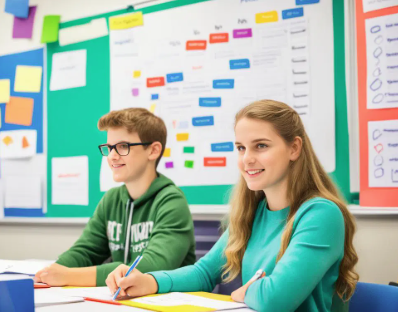Feedback plays a crucial role in education, serving as a guide for improvement and a bridge between effort and achievement. In personalized learning environments, where instruction is tailored to individual needs and learning paths vary, feedback becomes even more essential. It not only informs students of their progress but also empowers them to take ownership of their learning journey.
Enhancing Self-Awareness and Growth
In a personalized setting, feedback helps students understand where they are in their learning process. Whether it’s written comments, verbal discussions, or digital reflections, feedback provides clarity on what has been mastered and what still needs attention. This awareness fosters a growth mindset, encouraging students to embrace learning as a continuous process.
Supporting Individual Learning Paths
Every learner progresses at their own pace in a personalized model. Timely and specific feedback ensures that students stay on track, adjust their strategies, and build on their strengths. For example, a student who struggles with math concepts can receive targeted tips or resources, while another excelling in writing might be challenged with more advanced assignments.
Promoting Student Agency
Effective feedback encourages student agency by involving learners in the evaluation process. When students review and reflect on feedback, they begin to make informed choices about how to improve. This self-regulation is key to developing independence, critical thinking, and confidence in their abilities.
Encouraging Meaningful Teacher-Student Interaction
In personalized learning, the teacher shifts from being a lecturer to a learning coach. Feedback becomes a two-way dialogue that strengthens the teacher-student relationship. Through regular check-ins and formative assessments, teachers can provide guidance, celebrate progress, and support learning goals that align with each student’s path.
Leveraging Technology for Instant Insights
Technology enhances feedback in personalized learning through immediate, data-driven insights. Digital platforms can track performance and provide real-time suggestions. These tools help students understand their progress while giving educators the information they need to adjust instruction promptly and effectively.
Creating a Safe Environment for Growth
Constructive feedback delivered with empathy creates a safe space for learning. When students know that feedback is meant to support—not judge—they are more willing to take academic risks, try new strategies, and learn from mistakes. This environment is essential for developing resilience and perseverance.
Aligning Feedback with Goals and Standards
To maximize its impact, feedback should be aligned with learning objectives and academic standards. This ensures that even as students personalize their learning, they are still working toward clear, measurable goals. Clear rubrics and success criteria can help guide this alignment.
Conclusion
Feedback is more than correction—it’s a catalyst for growth in personalized learning environments. By guiding reflection, reinforcing strengths, and highlighting areas for improvement, feedback empowers students to own their progress. As personalized learning continues to shape modern education, feedback will remain a vital tool in supporting student success and meaningful learning experiences.














